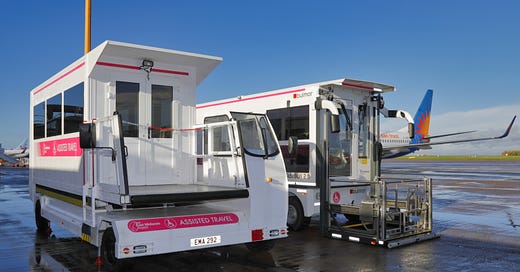The old battles - The Accessible Link #5
Why wheelchair provision at the aircraft door is important
Hello everyone,
Good news first: I am thrilled that East Midlands Airport has won the prestigious Disability Smart Award of the Business Disability Forum in the category of inclusive customer service!
The Disability Smart Awards recognise organisations that make their services accessible to disabled people. East Midlands Airport stood out with an innovati…
Keep reading with a 7-day free trial
Subscribe to The Accessible Link to keep reading this post and get 7 days of free access to the full post archives.




